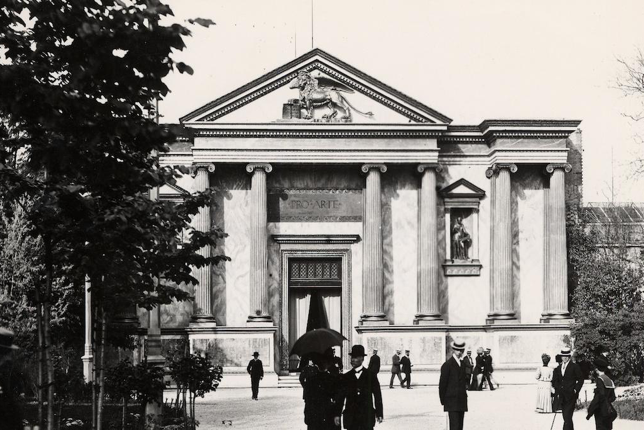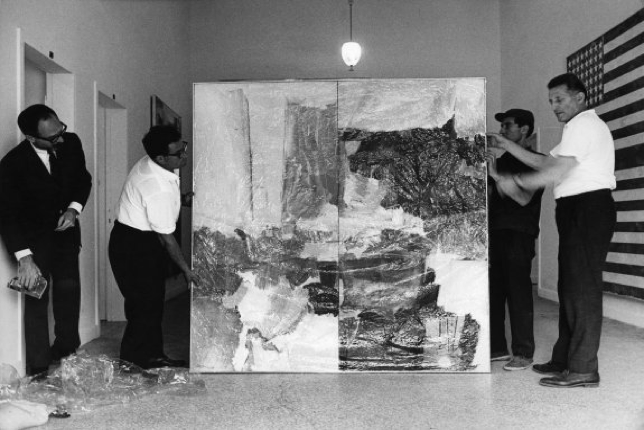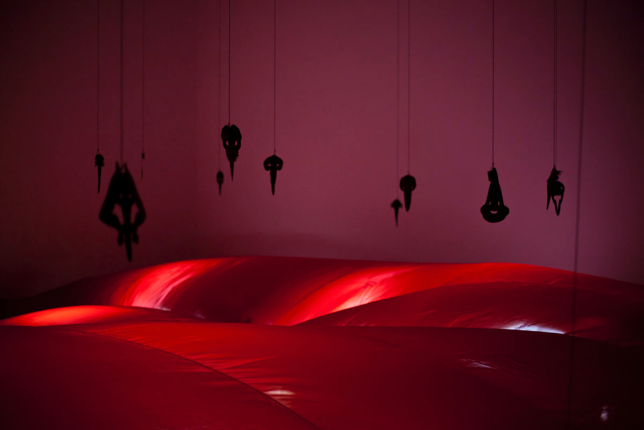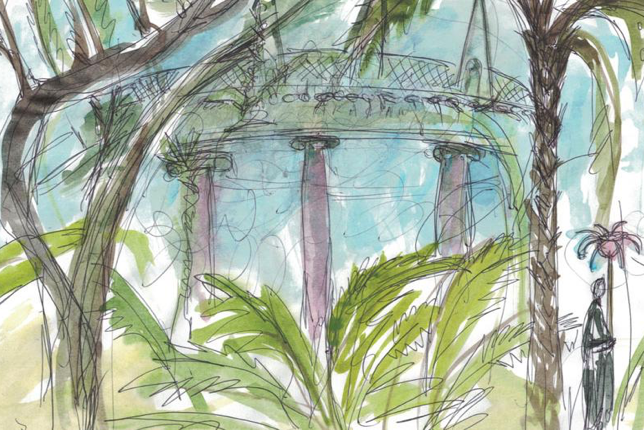
The Venice Biennale: Olympics of the Art World
The Serenissima has been painted a vibrant shade of contemporary art for the 58th edition of the Venice Biennale. Over the next six months, the charming, floating city will host the most important contemporary art figures in the world. The Arsenale, Giardini, museums, palaces and streets of Venice will be transformed into a haven of creative celebration. You may have already explored this ancient city, in person or through paintings… but you may have never had the chance to see it in the light of this international event !

Here at Artsper, we’ve brought you a complete overview of the most prestigious art show in Europe, discover its history, highlights and what’s in store for the 2019 edition.
The Creation of an Unparalleled Artistic Event

For over 120 years, the Venice Biennale has been one of the most prestigious cultural events in the world. The beginnings of the Biennale date back to 1893. The Venice City Council decided that in order to celebrate the 25th wedding anniversary of King Umberto I and Margherita of Savoy, they would organise a biennial art exhibition (which would literally “last two years”). However, the exhibition wasn’t held until two years later, mainly due to Mayor Riccardo Selvatico’s motivation and efforts. In 1894, with the support of the Venice Council, a biennale event dedicated to both Italian and international art was announced. During the winter of 1895, works on the Palazzo dell’Esposizione were completed in the Giardini del Castello. In April 1885, la prima esposizione internazionale d’arte della città di Venezia (the first international exhibition of the city of Venice) was announced, and King Umberto I and Queen Margherita of Savoy observed the event. The exhibition was extremely well received by the public; more than 220,000 visitors gathered around the Central Pavilion to admire the works of Venetian, Italian and international artists.
The Extraordinary National Pavilions

For the first international exhibition of the city of Venice, Mayor Riccardo Selvatico had a building constructed in the Giardini del castello. He recruited architects, Marius Pictor and Bartolomeo Bezzi, as well as sculptors, Lorenzetti, Nono, Guisti and Benvenuti. This building, was initially called Palazzo dell’Esposizione, but was renamed Pro Arte at the inauguration of the Biennale in 1895. More name changes came later, however. In 2009 it became the Italian Pavilion and in 2010 it was officially renamed the Central Pavilion, which it is still referred to as today. In 1907, organisers of the Biennale suggested the different participating countries build their own pavilions, and the first country to take this on board was Belgium. The Belgium Pavilion was the first international pavilion to open in the Giardini, and was quickly joined by Hungary (1909), Germany (1909), Britain (1909), France (1912), and Russia (1914). A total of 29 countries now have a national pavilion in the Giardini. Countries that don’t have one instead have pavilions spread across the city, placed between the Arsenale, palaces, art galleries and churches.
The Introduction of other Artistic Disciplines

In addition to art, the Venice Biennale also welcomes other creative disciplines such as architecture, cinema, music and theatre. The Biennale is renowned for three events: the Art Biennale, the Venice International Film Festival and the Architecture Biennale. Created in 1932, La Mostra Internazionale d’Arte Cinematografica (Venice International Film Festival) was the first ever festival dedicated to film, and is acclaimed for giving creatives the freedom to express themselves through cinema. The Architecture Biennale opened in 1980, and along with the Art Biennale, they are the only Biennale held every two years. The Art and Architecture Biennale alternate between years ending in even numbers (architecture) and odd (art), whilst the Venice Film Festival, the Theatre Biennale, the Music Biennale and the Dance Biennale take place every year.
The Promotion of New Artistic Talent

The Biennale has always been at the forefront of promoting new artistic and cultural trends. In the 1950s, abstract expressionism was introduced to the streets of la Serenissima, and in the 1960s, Pop art was celebrated through the works of Robert Rauschenberg. In the midst of the Cold War in 1977, the Biennale decided to promote the avant-garde by choosing paintings, films and literature created by the rebels and dissidents of the Soviet Union and Eastern Europe. “The Biennale of Dissent” was hence opened, despite the protest from the Soviet Union. The president of the event reportedly stated: “Among the events of recent years, cultural dissent in Eastern Europe represents an important movement in culture (…) I consider it our duty to show solidarity with those who are confronted with authoritarian regimes, and who resist them because of their commitment to art and culture.” However, due to the controversy of the decision, President Ripa di Meana left his position at the end of the year.
The Prestigious (and much sought after) Awards

Since its creation, the Biennale has awarded various prizes to its exhibiting talent. The “Grand Prize” was set up in 1938, but was abolished in 1968, due to political and intellectual protests. In 1986, the award was reintroduced as the “Golden Lion”; the famous prize we know today. The Golden Lion is awarded in each of the Biennale domains (Art, Architecture, Cinema, Theatre, Music, Dance), and is won for various reasons. In art for example, it can be awarded for the “Best National Participation” at the Biennale..
The Representation of Women

This year, the CHANEL Fund for Women in the Arts and Culture is the exclusive patron of the French Pavilion. The Fund works to recognise women artists and curators, and Laure Prouvost will curate the French exhibition. Prouvost is the third female artist invited to represent France at the Biennale, after Annette Messager in 2005 and Sophie Calle in 2007. Accompanied by curator, Martha Kirszenbaum, femininity will be the driving force of France’s show this year. Women were the focus of the Biennale in 2017, and under the patronage of French commissioner, Christine Macel, it celebrated a diversity of sexual and cultural identities. 2017 combined contemporary art with women’s art, through the remarkable participation of both emerging and established women artists. It was only at the 51st edition of the Biennale in 2005, that the event was first orchestrated by a woman; Maria De Corral and Rosa Martinez joined forces to curate the show. However, Bridget Riley was the first woman to be awarded the International Painting Prize at the Venice Biennale in 1968. This year, the 58th edition will open with a female majority; proving how essential it is to know the emerging women artists in the international art scene.
Previous Winners of the Biennale

Henri Matisse: In 1950, the 81 year-old French painter represented France at the 25th edition of the Venice Biennale. He was awarded the Grand Prize for painting, which he decided to share with his sculptor friend, Henri Laurens.
Anish Kapoor: In 1990, at only 36 years old and at the very beginning of his career, Anish Kapoor won the Golden Lion for Best New Artist.
Marina Abramovic: In 1997, the artist created the Balkan Baroque performance at the Venice Biennale, which earned her the Golden Lion for Best Artist. The Serbian artist spent four days sitting on top of 1500 cow bones, cleaning blood off them one by one.
Louise Bourgeois: French visual artist and sculptor, Louise Bourgeois, has left an unparalleled mark on modern and contemporary art. In 1999, she was awarded the Golden Lion for her work at the Venice Biennale.
Annette Messager: in 2005, the French pavilion was dedicated to Annette Messager, subsequently winning her the Golden Lion. The artist was rewarded for her installation Casino, which was inspired by Pinocchio’s story.
What Does 2019 Have in Store?

Ralph Rugoff, Director of the Hayward Gallery in London, is the curator of the 58th Venice Biennale. Entitled May You Live In Interesting Times, this year’s Biennale will present 90 pavilions, with four new nation entries: Madagascar, Pakistan, Ghana and Algeria. Touching upon hot topics such as fakes news, social media and the abundance of information we consume daily, Ralph Rugoff designed the event in two exhibitions. This is intended to unite the artists between the Arsenale and the Giardini. Laure Prouvost represents France with her road-trip through the subconscious. Her audiovisual project Vois ce bleu profond, plunges the viewer into an absurd and intoxicating world, and we can’t help but wonder if the Golden Lion awaits at the end of her trip…

About Artsper
Founded in 2013, Artsper is an online marketplace for contemporary art. Partnering with 1,800 professional art galleries around the world, it makes discovering and acquiring art accessible to all.
Learn more













